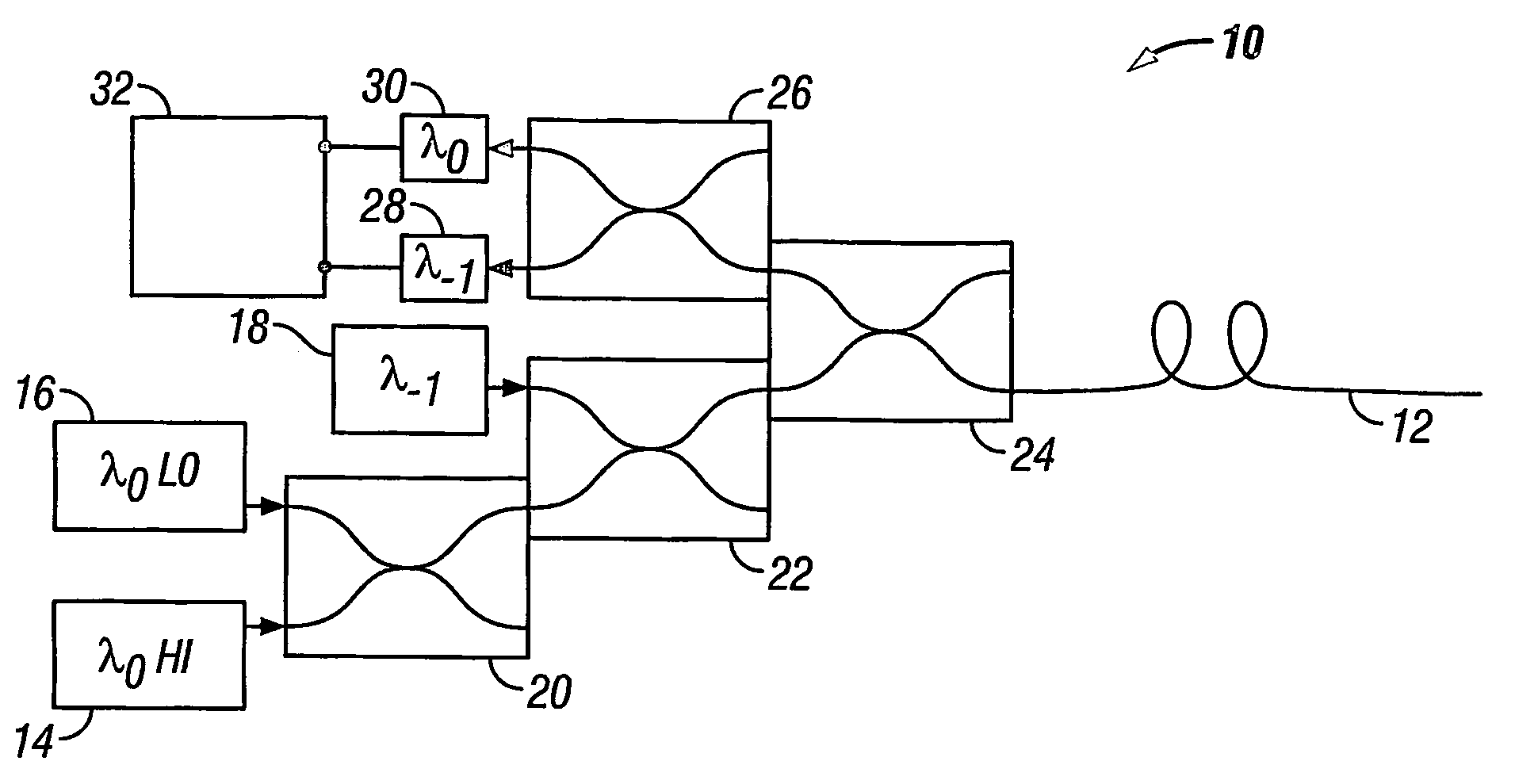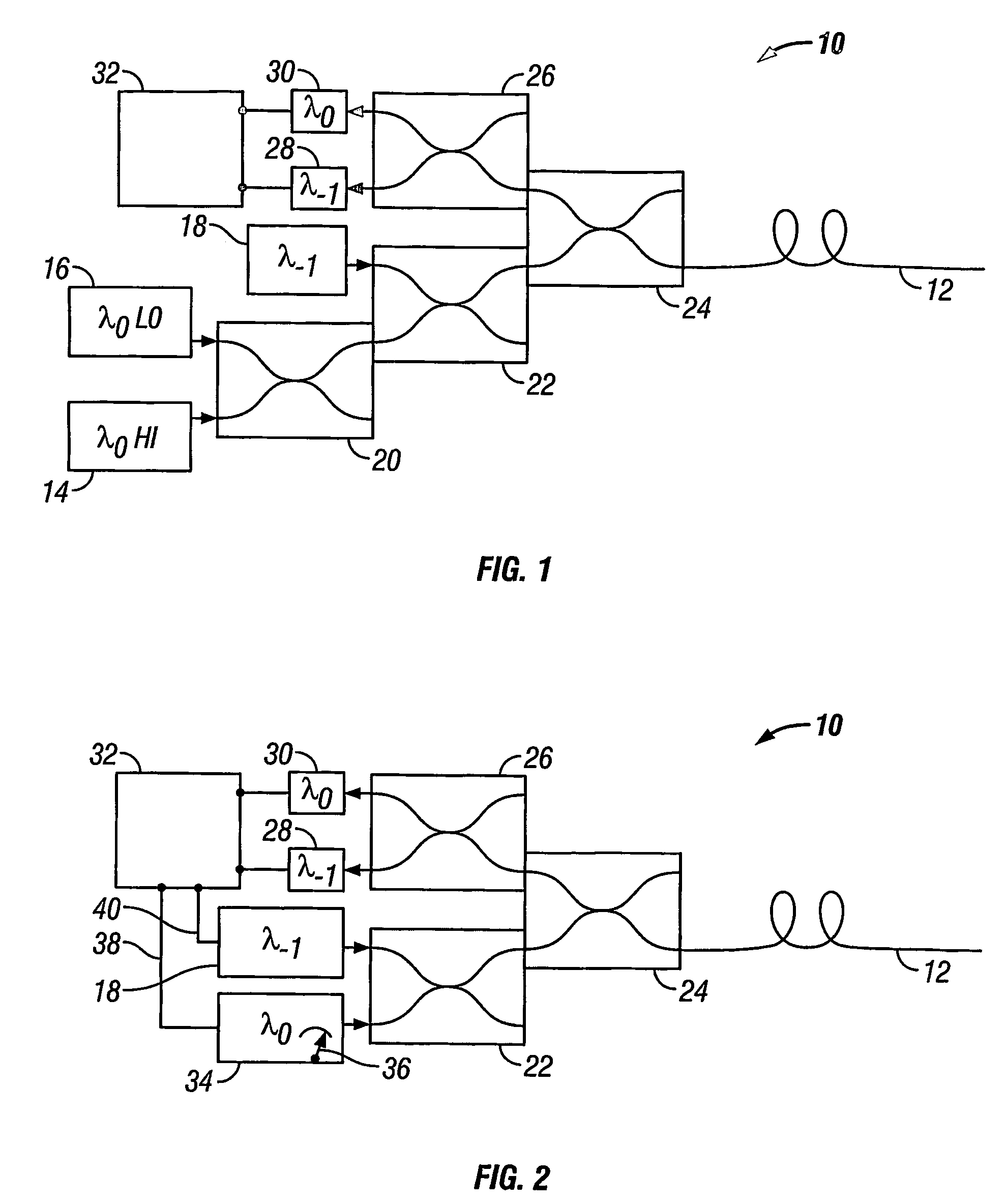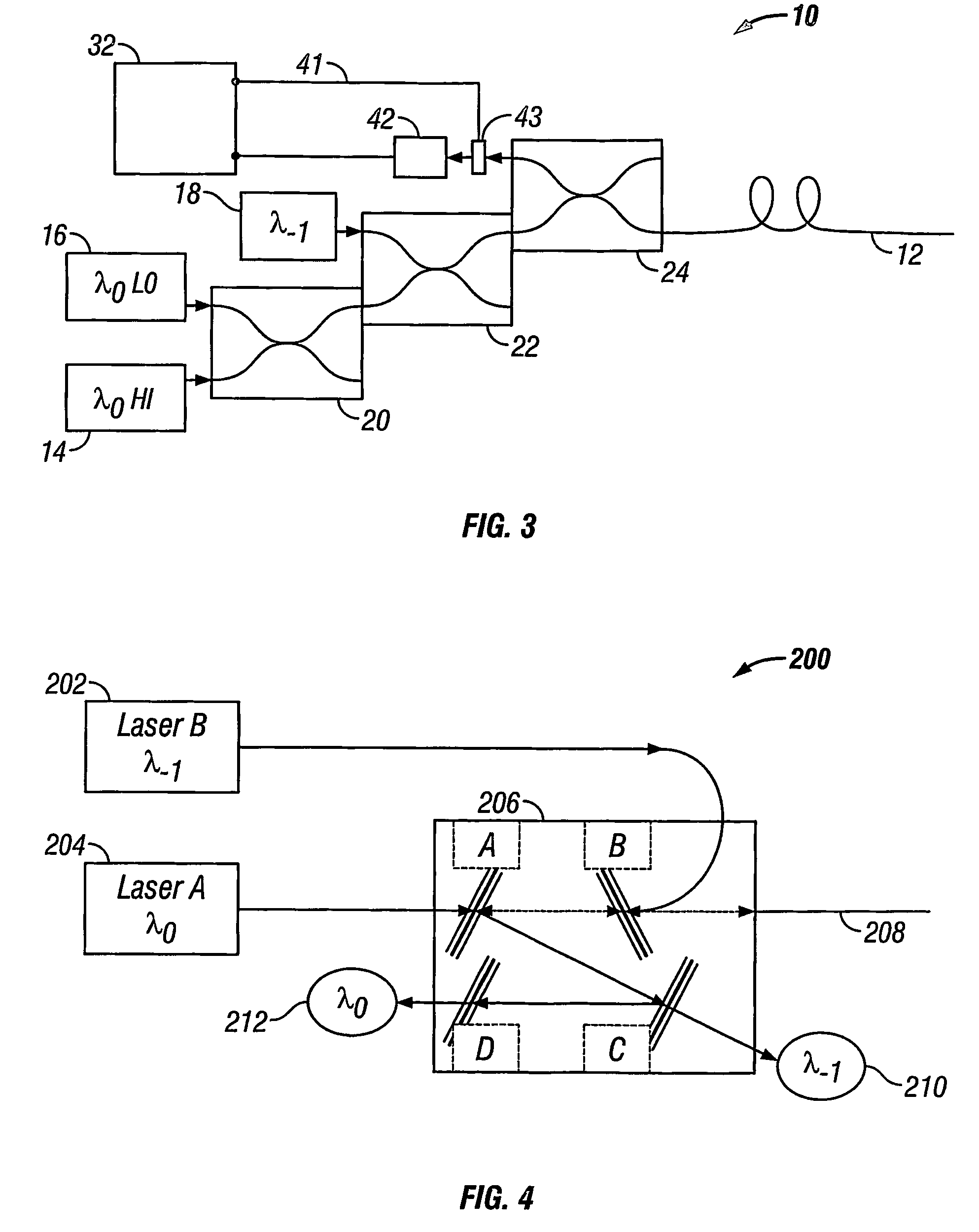Distributed optical fibre measurements
a technology of optical fibres and optical fibers, applied in the direction of optical radiation measurement, heat measurement, instruments, etc., can solve problems such as unwanted nonlinear effects, and achieve the effects of improving measurement accuracy, close alignment loss characteristics, and enhancing managemen
- Summary
- Abstract
- Description
- Claims
- Application Information
AI Technical Summary
Benefits of technology
Problems solved by technology
Method used
Image
Examples
first embodiment
[0093]Apparatus may be configured in a number of ways to implement the present invention.
[0094]FIG. 1 shows a schematic representation of a first example of apparatus suitable for implementing the method of the present invention.
[0095]The apparatus 10 comprises a length of optical fibre 12 arranged to be deployed in a measurement region of interest, having an associated parameter of interest of a kind that affects the optical propagation characteristics of the fibre 12. The length of the optical fibre 12 is such that it extends at least over a distance within the measurement region which is of interest. The fibre 12 is arranged for single-ended operation, in that all associated equipment is positioned at one end of the fibre 12. This is advantageous because measurements can be made in environments and circumstances in which it is not possible or practical to access both ends of the fibre 12.
[0096]As discussed above in the theory section, measurements are made using a combination of ...
second embodiment
[0111]The examples and embodiments presented thus far have used fused fibre couplers to direct the various light signals between the optical sources, the sensing fibre and the detectors. Couplers of this kind are particularly applicable to systems using single mode optical fibre, for which single mode fused couplers with the necessary wavelength-dependent power splitting and coupling capability are readily available. However, in the event that multimode optical fibre is used for the sensing fibre, an alternative approach may be adopted. Fused tapered fibre couplers are available for multimode fibre, but these devices tend to lack the required wavelength-dependent operation. Therefore, a multimode system may instead comprise bulk optic coupling and splitting arrangements to achieve the same result.
[0112]FIG. 4 shows a schematic diagram of such a system. The apparatus 200 comprises a first optical source 202 operable to generate light at wavelength λ−1 to form the second optical signa...
third embodiment
[0124]The purpose of the third output signal, being the Rayleigh signal at λ−1, is to normalise the losses suffered by the first output signal, which is the Raman signal at λ−1. However, these two signals originate from different sources, namely the Raman scattering event in the case of the first output signal, and the second optical source 18 in the case of the third output signal. The spectrum of the Raman scattering is typically broad, so that it may exceed the spectral bandwidth of the second optical source 18. In some cases the Raman spectrum may exceed that of any available optical source operating at the appropriate wavelength. The attenuation seen by the two signals is therefore likely to be different.
[0125]Therefore, to improve the accuracy of the normalisation, according to a third embodiment of the invention, the spectrum of the second optical source 18 is matched to the Raman spectrum. A spectral modifier may be provided to achieve this, which may be implemented in sever...
PUM
| Property | Measurement | Unit |
|---|---|---|
| core diameter | aaaaa | aaaaa |
| core diameter | aaaaa | aaaaa |
| first wavelength λ0 | aaaaa | aaaaa |
Abstract
Description
Claims
Application Information
 Login to View More
Login to View More - R&D
- Intellectual Property
- Life Sciences
- Materials
- Tech Scout
- Unparalleled Data Quality
- Higher Quality Content
- 60% Fewer Hallucinations
Browse by: Latest US Patents, China's latest patents, Technical Efficacy Thesaurus, Application Domain, Technology Topic, Popular Technical Reports.
© 2025 PatSnap. All rights reserved.Legal|Privacy policy|Modern Slavery Act Transparency Statement|Sitemap|About US| Contact US: help@patsnap.com



